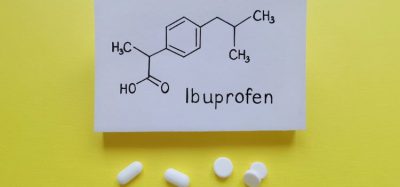Patient adherence: the true costs
Posted: 25 June 2020 | Dave Elder (David P Elder Consultancy) | No comments yet
Adherence to medicines – ie, maintaining consistency and complying with correct dosage – is vital for treatment success, yet patient non-adherence remains a global concern, risking a multitude of consequences for both the patients and healthcare systems. Dave Elder explores the issue of medicine adherence and expounds on current efforts to reduce the pill burden.


FOR THE majority of clinical conditions, rapid diagnosis followed by fast and effective treatment is vital to a patient’s continued quality of life and potentially their ongoing survival. However, a major impediment to the efficacy of any medical treatment is the patient’s failure to take the medicine in accordance with the patient insert leaflet (PIL) or physician’s recommendations. Even in countries with good healthcare systems and knowledgeable patient populations, patient adherence can still be low, with 40 percent failing to follow dosing instructions.1 This can rise to 70 percent when dosing regimens are complex and/or necessitate changes in lifestyle, such as dietary changes.2
Patient non-adherence (or non-compliance) is a multi-faceted issue; the physician’s advice is often followed with the best of intentions and/or ability, but intermittently forgotten, ignored, misconstrued or misinterpreted.3 Pill burden is often a significant factor in non-compliance, particularly for older individuals.4 Another factor causing patient confusion, and resulting in poor adherence, is the dosing interval of the medicinal product. Meta-analyses across multiple clinical studies suggest that within acute and chronic disease states, decreasing dosage frequency from multiple daily dosing (ie, twice and thrice daily – bid and tid, respectively) to daily dosing (ie, od) may radically improve patient adherence.5 This confusion is also exacerbated if patients are taking multiple drug regimens where drugs have different dosing frequencies (ie, some are tid, some are bid, while others are od).6
One of the main factors contributing to bacterial resistance is non-compliance; whereby the patient often follows the dosing instructions until they feel better, then discontinue the medication before the dosing regimen is fully complete.7 The healthcare cost repercussions are also significant. In the US alone, the cost is estimated at over $100 billion per year.8 In 2015, the annual “disease-specific economic cost of non-adherence per person ranged from $949 to $44,190”.9 Non-adherence also increases patient mortality rates in many disease states.10
Therefore, reducing the pill burden by developing fixed dose combinations (FDC) of therapeutically related drugs11 can be an attractive proposition. FDCs can offer convenience to patients and simplify complex dosing regimens in various disease areas such as HIV, cardiovascular diseases, TB and diabetes.12 FDCs can also be easier to pack and distribute, improve reliability and be less expensive than the corresponding single-dose formulations. A single tablet FDC regimen of all treatment therapies was found to be linked with “higher adherence rates, decreased hospitalisations and more patients with an undetectable viral load” than patients taking multiple tablets for treatment of HIV/AIDS.13 The main chemistry, manufacturing and control) (CMC) challenges with development and manufacture of FDCs are the physical and chemical compatibility of two or more drugs; for instance, combining an anionic drug – ie, dolutegravir sodium – with a cationic drug – ie, abacavir sulfate in TriumeqTM14 – is challenging. This is often addressed by separating the incompatible components and manufacturing bi- or tri-layer tablets, compression-coated tablets, multi-particulates, etc. Decision trees are useful aids in determining formulation strategies.15 The other related CMC problem is the necessary high drug loading within the formulation. For many HIV combinations, the active dose is ≥1g (eg, TriumeqTM)14 and with added excipients the compression weight of the resultant tablets is often ≥1.2g. As such, the flow and compression properties of the combination drugs must all be “fit for purpose”. The size of such FDC dosage forms often necessitates a functional break-line to facilitate swallowing.
The other strategy for reducing pill burden is reducing the dosing interval by developing longer acting therapies. Moving beyond the once daily dosing paradigm will be important in the future. As such, once weekly oral16 or once monthly (or longer)17 injectable dosing regimens would significantly enhance treatment outcomes.
About the author
David Elder has nearly 40 years of service within the pharmaceutical industry at Sterling, Syntext and GlaxoSmithKline. He is now an independent GMC consultant. He is a visiting professor at King’s College, London and is a member of the British Pharmacopoeia. He is a member of the Joint Pharmaceutical Analysis Group (JPAG) and the Analytical Division Council of the Royal Society of Chemistry.
References
- DiMatteo MR. Social support and patient adherence to medical treatment: A meta-analysis. Health Psychol. 23, 2004, 207-218.
- Chesney MA. Factors affecting adherence to antiretroviral therapy. Infect. Dis., 30(S2) 2000 S171-176.
- Martin LR, Williams SL, Haskard KB, DiMatteo MR. The challenge of patient adherence. Ther Clin Risk Manag., 1(3), 2005,189–199.
- Sutton SS, Magagnoli J, Hardin JW. Impact of Pill Burden on Adherence, Risk of Hospitalization, and Viral Suppression in Patients With HIV Infection and AIDS Receiving Antiretroviral Therapy. Pharmacotherapy, 36(4), 2016a,385-401.
- Srivastava K, Arora A, Kataria A, Cappelleri JC, et al. Impact of reducing dosing frequency on adherence to oral therapies: a literature review and meta-analysis. Patient Prefer Adherence. 7, 2013, 419–434.
- Ming RT, Teo V, Yu HK, Raaj S, et al. Association between number of doses per day, number of medications and patient’s non-compliance, and frequency of readmissions in a multi-ethnic Asian population. Preventive Med. Rep., 1, 2014, 43-47.
- Elder DP, Kuentz M, Holm R. Antibiotic Resistance: The Need For a Global Strategy. Pharm. Sci., 105, 2016, 2278-2287.
- Hay M, Thomas DW, Craighead JL, Economides C, et al. Clinical development success rates for investigational drugs. Biotechnol., 32, 2014, 40-51.
- Cutler RL, Fernandez-Llimos F, Frommer M, Benrimoj C, et al. Economic impact of medication nonadherence by disease groups: a systematic review. BMJ Open 2018;8:e016982. doi:10.1136/bmjopen-2017-016982. Accessed 05 June 2020.
- Currie CJ, Peyrot M, Morgan CL, Poole CD, et al. The Impact of Treatment Noncompliance on Mortality in People with Type 2 Diabetes. Diabetes Care, 35(6), 2012, 1279–1284.
- Satsoglou S, Tziomalos K. Fixed‐dose combinations: A valuable tool to improve adherence to antihypertensive treatment. Clin. Hypertens., 20, 2018, 908–909.
- Lancet editorial. Treatment adherence: Can fixed dose combinations help? P91, 3(2), Lancet Diabetes & Endrocrinology, 1-2. DOI:https://doi.org/10.1016/S2213-8587(15)70011-2.
- Sutton SS, Hardin JW, Bramley TJ, D’Souza AO, et al. Single- Versus Multiple-Tablet HIV Regimens: Adherence and Hospitalization Risks. J. Manag. Care, 22(4), 2016b,242-8.
- EMC website. Triumeq 50 mg/600 mg/300 mg film-coated tablets. https://www.medicines.org.uk/emc/product/3318. Accessed on 06 June 2020.
- Siew A. Tackling challenges in the development of fixed dose combinations. Tech., 38(4), 2014, 1-2.
- Kanasty R, Low S, Bhise N, Yang J, et al. A pharmaceutical answer to nonadherence: Once weekly oral memantine for Alzheimer’s disease. Contr. Release, 303, 2019, 34-41.
- Wright JC, Burgess DJ (Eds.) Long Acting Injections and Implants, CRS Press, 2012.pp.1-557.









